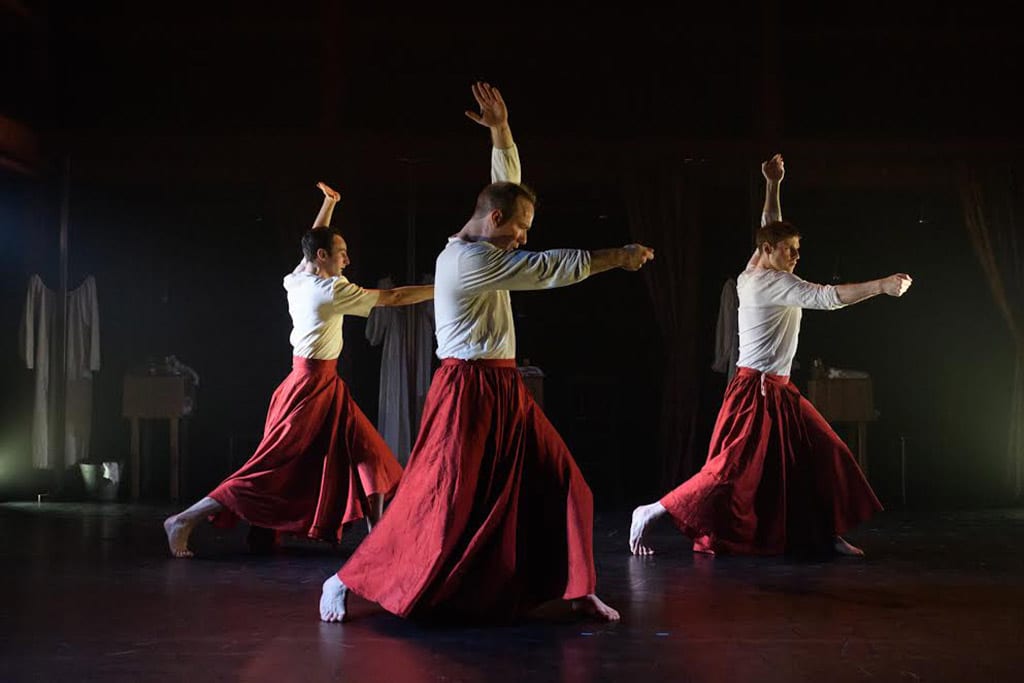This extraordinary dance piece is a fusion of British Sign Language (BSL) and dance, or BSL as dance. The performance draws attention to the layering and materiality of language and gender, and the fluidity of both.
At the back of the stage three dancers – Thomas Baylis, Jacob Casselden and Jack Webb – sit in their dressing rooms. They stretch, apply rouge, lipstick. They’re wearing simple white Shakespearean shirts and don billowing red silk skirts.
The choreography highlights the strengths of each dancer; they come from different performance backgrounds: Baylis trained in modern ballet, Casselden is a drummer and award-winning deaf dancer, and Webb is a choreographer. Although all of them dance BSL, only one performer is fluent. All audience members have access to lines from Macbeth, though at different times in different ways. Some follow BSL and some listen to the nightmarish, disembodied voice reading Lady Macbeth’s lines to the sound of the wind blowing. There’s a blurring between the two versions of English when hearing audience members see each man draw a finger across his throat. The meaning seems universal.
As well as Shakespeare, the soundtrack is made up of classical pieces, including Verdi’s Macbeth opera, sung in English. Between each piece we experience a silence that draws attention to itself, as the performers continue to dance. They move in and out of unison, collaboration, solos. They rock babies that are actually towels filled with rocks. They scrub blood from the floor and wrap their spilled rocks back up. They also steal some of Macbeth’s best lines. They have blood on their hands that won’t wash off. Is this a dagger I see before them?
The all-male cast was chosen partly because actors in Shakespeare’s time were all men (women weren’t officially allowed to be actors until the 1660s). The result is far from traditional. Does performance unsex the dancers, or ungender them? I’m not sure it does, or can, but it certainly raises important questions about representation and signification. The quality of dance, concepts and choreography is high. This production of Lady Macbeth: unsex me here marks the 400th anniversary of Shakespeare’s death. His work is still very much alive and tonight’s performance is an original and successful take on one of his most famous dramas.

